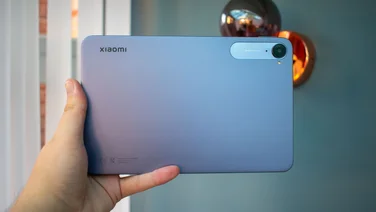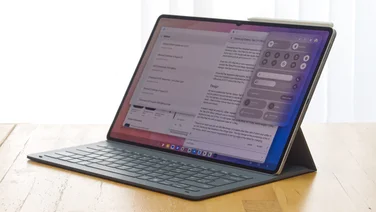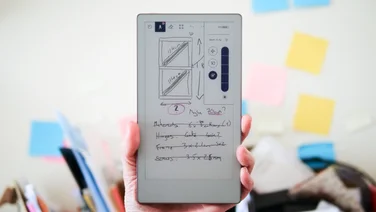To help us provide you with free impartial advice, we may earn a commission if you buy through links on our site. Learn more

Update: Since this review was first written, Amazon has discontinued the Voyage, replacing it with the Kindle Oasis, which offers ebook fans an even more highbrow reading experience.
The current Kindle Oasis (it’s the second generation Oasis) is a truly awesome e-reader. It has a larger, 7in display than the Voyage. It’s slimmer and also water resistant to two metres, so you don’t need to worry about spilling a drink on it or dropping it in the bath. And it’s also both Bluetooth and Audible compatible so that, if you own both formats, you can flip between ebook and audiobook seamlessly.
The catch is that the Kindle Oasis is significantly more expensive than the Kindle Voyage was, costing £230 for the Wi-Fi only model and £320 for the 3G-equipped version.
Our original Kindle Voyage review continues below:
Kindles have often led the way when it comes to eReaders, despite Amazon’s dominant position as a bookseller. Thanks to new features, such as slender pocketable designs, touchscreen interfaces and page lighting have all proved popular. Amazon’s current top-end device is the Kindle Voyage, which brings a bezel-less display, a high-resolution screen and automatic brightness control.
Not sure which Kindle to buy? Read our guide to the latest models
Design

All of these make the Voyage a more tablet-like device. The rear design reinforces this, mimicking that of the Kindle Fire tablets, with angular lines and a power button that falls neatly under your forefinger, if you’re holding the device in your left hand anyway. The angular rear panel, low weight of 180g and soft-touch finish combine to make this is the easiest Kindle to keep a hold of. It’s slightly sleeker than previous models too, at 162x115x7.6mm.Around the front, a single pane covers the display from edge to edge with only the merest lip around the edge. It looks great compared to previous devices, with their thick, raised bezels; but more importantly it makes it far easier and more natural to make page turns using left and right swipes, as your finger doesn’t hit the bezel as it moves across.
The screen also a smoother surface, eradicating the rasping sound and sensation on previous Kindles when you swipe the screen. It’s also incredibly responsive, now an E Ink screen is never going to react like an LCD, but this is the best I’ve seen to date, with the screen starting to refresh instantaneously on your input. It’s notably faster than the Paperwhite, though not by much admittedly.

On either side of the screen are pressure-sensitive buttons, which Amazon calls PagePress. I’m guessing that some Kindle users have bemoaned the removal of physical page turn buttons, last seen on the 2012 Kindle, and this is Amazon’s attempt to placate them. The lower, larger buttons turn to the next page, while the upper ones turn back a page. There’s a tiny amount of physical give in them, and you can set the sensitivity of the buttons, and the amount of haptic feedback you get when they’re pressed. They work fine, though I find the new touchscreen so good that I quickly disabled them altogether, letting me rest my thumb beside the screen without accidentally activating them.The 6in screen may have a smoother finish, but it’s still as resistant to reflections as its rougher predecessor.
Display

The Voyage uses a 300 pixels-per-inch (PPI) screen, with a 1,448×1,072 resolution. At launch that was pretty impressive stuff, but that’s no longer the case today. Amazon has launched an updated Kindle Paperwhite 2015 that uses an equally-detailed screen, while Kobo has also launched a 300 PPI eReader in the form of the Kobo Glo HD. Both of these devices are available for around £60 less than the Voyage, which puts it under considerable pressure.It may have more competition, but the screen on the Kindle Voyage is still fantastic. It’s incredibly crisp, making older eReaders look a little smudged in comparison. Comparing it head-to-head with an older Paperwhite, the Voyage comes out as a clear step up.

With the screen being matched elsewhere, it’s the automatic brightness control that’s the real star here. I simply haven’t realised just how little I adjusted the brightness to suit the lighting on my Kindle Paperwhite until I saw the Voyage in action. The brightness shifts smoothly up and down, in a way that didn’t distract my reading, and keeps the page in sharp contrast in any lighting conditions. You can turn it off of course, plus there’s an additional mode which slowly dims the light when you’re reading at night, as your eyes adjust to the dark.^ The Voyage side-by-side with a Kindle Paperwhite, the screens are now the same, but the voyage is a nicer device to use
Interface and text handling
However, at present the screen is being held back by the software on the device, it simply needs more font size increments to make the most of the higher resolution. Out of the eight font sizes on offer, all our staff used one of the bottom three, and wanted more precise adjustment of text size in this area of the scale. We generally found the smallest size too small, but the next one up a touch too big. I understand that a small minority needs very large font sizes, but why not provide more choice across the whole range?
Amazon has recently updated the interface on the Voyage, along with all the Kindles dating back to 2013. The new interface looks a lot better than the old one with refined icons that make the most of today’s higher resolutions displays. The homescreen has been redesigned too, you can now see what you’re currently reading, as well as current book samples and wishlist entries in a bar on the right, with the usual recommendations below. Settings has been streamlined with easy access to the ones we all use most, such as airplane mode and sync.

The update brings Amazon’s new typesetting engine to sit alongside its new Bookerly font, which was specially designed for eReaders and is highly legible at all sizes. The new engine does position text more naturally along each line, with words split across lines by hyphens, rather than the fully justified layout with lots of extra spaces that we sufffered before. It’s also possible to remove ‘reading progress’ for a cleaner appearance.

However, Amazon still lags behind its main rival, Kobo, in terms of text layout and font selection. The ePub based Kobo has more fonts, more font sizes and font weight tweaking; along with the ability to use custom fonts supplied with that specific book. Kobo has a book-like layout, with traditional elements such as the title always displayed at the top of the page, which some will like but I think is a waste of screen space. It also has text justification options, so you can choose how you like your text to appear.
The Voyage, along with most Kindle eReaders, is compatible with Amazon’s new Family Sharing system. This lets two adults (along with up to four children) share eBooks freely between them, so you don’t have to buy the same book twice. There’s also parental controls, so you restrict parts of your library from your kids. I still get round this by simply adding multiple Kindles to a single Amazon account, rather than having them attached to seperate accounts, but I can see that some will see this as a huge boon.
Speaking of sharing, the new interface also lets you share book excerpts via Facebook and Twitter, and even appends a free sample of the book with the post; which anyone can open and read in a web browser, even without an Amazon account.
Conclusion
The Voyage is still the best eReader hardware I’ve ever seen. The automatic light will be hard to live without when I go back to my own Paperwhite. The display is top-notch, and it could be better still if Amazon gave us yet more text options, in terms of both font size and page layout.
At £169 though it isn’t cheap, being £80 more than the current Kindle Paperwhite 2015 which has the same display. Most owners of older Kindles without built-in lights would be better off buying that model. If you have a relatively recent Paperwhite then the Voyage is tempting but it doesn’t really provide enough to make it an essential upgrade – unless you read tons of eBooks in widely varied lighting conditions.
As usual there’s a 3G model too, costing a whopping £229, though with the proliferation of Wi-Fi these days, I don’t think it’s worth the extra cash. My only remaining point is that I’d like to see a slightly larger model with a bigger screen from Amazon, but there doesn’t seem to be any sign of that coming soon, instead check out our Kobo Aura H2O review with its 6.8in display.
It won a Best Buy award upon its release, but with other 300PPI devices around for much less, I’ve demoted the Kindle Voyage to a Recommended award for the time being.








